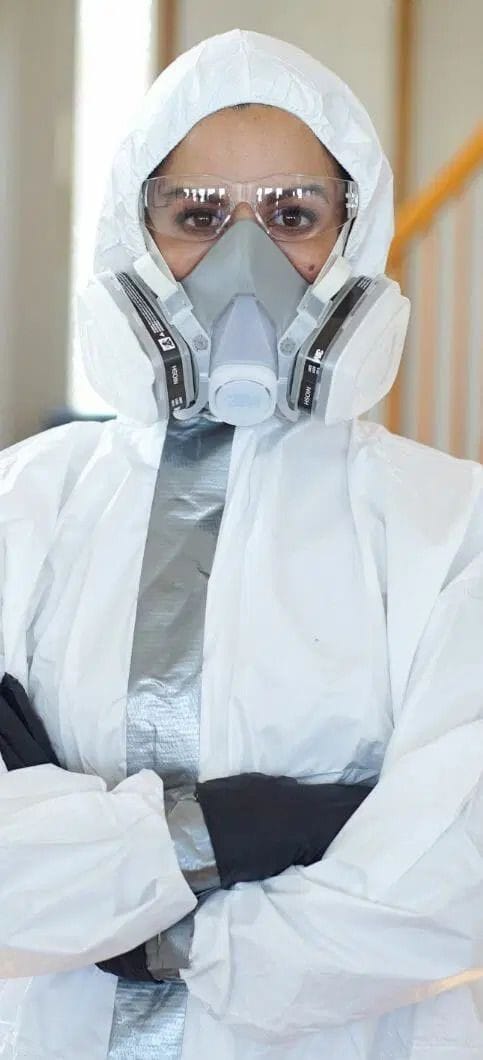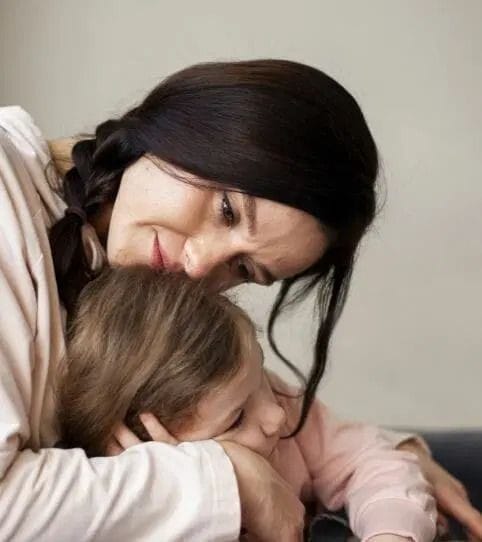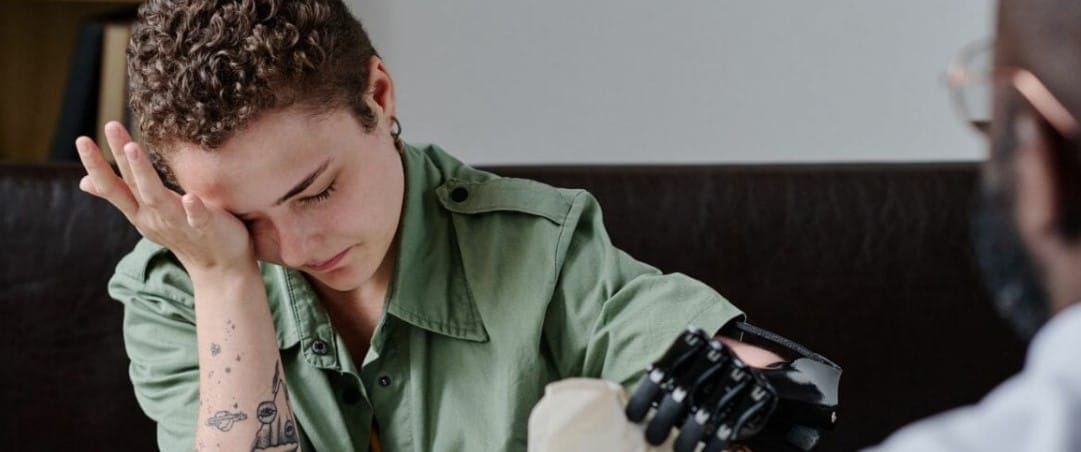
There is no timetable on grief, so it’s impossible to say how long it will take for your life to begin to feel normal again.
There may be times when it feels like nothing will ever be right again, but try to remind yourself that this feeling is not forever. You will recover, it just takes time.
It’s hard to be patient with recovery, especially as life keeps moving on around you and pressuring you to continue as normal, but you deserve the time to heal and adjust from this traumatic loss, so allow yourself the time and space to do so.
There are, however, some things you can do to aid in your recovery process and ensure you are on the best possible path toward healing:

It may feel as though there’s nothing a therapist could tell you that you don’t already know, but therapists do a lot more than just talk. A good therapist can:
Professional help won’t cure your grief, but it can help you feel like you have more control over where the grief is taking you.

Because suicide is unfortunately so common, there are many survivors who are going through something very similar to you.
Finding a support group will help you to connect with them. Like therapy, this can give you a forum to work through complicated feelings—but more importantly it can help you feel less alone in what you’re going through.

Support groups are excellent, but it is also a good idea to form a tighter circle of support with those who are grieving the same person you are.
With this group you can share more specific feelings about the situation, as well as find positive ways to honor your loved one together.
Eventually you may find yourself laughing together over happy memories of the person, which is a huge and important step on the road to recovery.
Some people are able to find a greater sense of peace and understanding through personal faith practices.

Whether it’s organized religion or general spiritual practices, finding spiritual meaning in life and death can be hugely beneficial.
However, be aware that some religious belief systems condemn suicide as a sin.
Carefully consider whether these beliefs will aid in your recovery or if another faith would prove more forgiving and uplifting.

As time goes on, you may find that birthdays, anniversaries, and holidays are especially difficult. During these times, it can be helpful for you and other loved ones to find special ways to honor the person you lost.
These can be small acts, like sharing stories on holidays, or larger things, like celebrating their birthday. Mark the occasion with whatever feels right.
Beginning new traditions is a good way to keep your loved one close to you even as your lives begin to move forward without them.
Above all, community and connection are what will be most helpful in getting you through this time.

Resist the urge to disconnect from others. Do what you can to reach out. Be sure to accept the help of those who are reaching out to you.
There are a lot of other people going through the same tragedy as you, and you can support one another through this difficult journey.
There are also likely people who care about you that aren’t connected to the tragedy who you can lean on.
Even if you aren’t looking for someone to console you, sometimes finding distractions from the pain can be helpful in allowing yourself the space to heal.
In the wake of a suicide, there is often an increase in suicidal thoughts and impulses in loved ones as well. Often, these thoughts are a result of your brain trying to cope with the loss. It can become a genuine risk—particularly among families and friend groups with high rates of mental illness.
To kep everyone safe, have a close community of survivors and encourage everyone to be open with their feelings, especially about suicidal thoughts.
The more your community unites to support and protect each other, the better the chance of preventing this tragedy from happening again.

Your grief may have you feeling a little stuck in time right now—unable to move forward in any meaningful way. As time passes this will begin to ease and you will find yourself beginning to move on.
When the forward motion starts again, it is an instinct for some to try to hang onto their grief out of a sense of duty to the person they lost, or fear that letting go will mean forgetting.
The idea of truly moving on can be scary. If you’re struggling with the transition, volunteering your time to a cause dedicated to preventing suicide and supporting survivors like you can help to ease some of the guilt and fear.
Working to do some good in the name of your lost loved one serves as an excellent bridge to carrying on with your life while still keeping their memory with you.

There may still be bumpy roads ahead. Grief is complicated and can come in spurts and waves, but as you start feeling a little more whole give yourself permission to begin living again.
Little by little, life and joy will return to you, and though the ache may not ever fully go away, things will get better.
Suicide leaves deep wounds in families and communities. The scars will always be there. However, with time and support, you will be able to reclaim happiness for yourself and begin living again.

There is no right answer for how you should be feeling following the suicide of someone close to you.
Grief is complex, and it’s rare that any two people will experience it in the same way.
Just know that whatever you’re feeling is okay.
Some of the most common emotions people report feeling when coping with a loved one’s suicide include:

Especially in the early aftermath, it’s common for people to feel numb, disconnected, and distracted. This shock may last for a long time. You may feel a sense of detachment from reality until you are better able to process what happened.
Depression following a traumatic loss can be almost identical to the symptoms of clinical depression. There may be a lack of energy and motivation, difficulty sleeping, loss of appetite, and overwhelming sadness.
This may ease with time, but in some cases it can mark the onset of an ongoing depressive disorder.

Our brains often try to find someone to blame to protect us from the impact of a loss.
You may be angry at yourself or another loved one for not noticing or acting sooner, or at whatever systems you believe failed the victim.
You may even feel angry at the deceased person for abandoning you or for upending your life with their decision.

If the suicide took place after a long and difficult struggle with mental or chronic physical illness, you may feel a sense of relief that it’s over—particularly if their illness put frequent strain on their relationships.
This is more common than you think, and a lot of people experience this, but you may begin to feel like you’re a uniquely bad person for feeling this way.
This can easily cycle into guilt.
You may begin to convince yourself that you secretly wanted the victim to be gone or feel selfish for your relief over not having to care for them or manage their difficult emotions anymore.
Human relationships are complicated, as is grief, so try to remember that you are not the first person to ever feel this way. Relief does not mean that you’re happy they’re gone, just that you wish something could have been different while they were still around.

Loss can often feel senseless, and so you may fall into a cycle of “if only” to find reason for what happened. Guilt can also result from any other emotion you may find yourself feeling...
Guilt is complex and is perhaps the most common feeling for close loved ones of a suicide victim to experience.

You may experience one of these feelings overwhelmingly throughout your grieving process, or perhaps all of them in some capacity at different times. You may also be feeling something entirely different from any of these.
However your grief is manifesting, there is no wrong way to feel at a time like this. More importantly, you are likely not the only one feeling this way.

People tend to mask when they are feeling something they believe to be inappropriate for the situation, but if you are feeling confusion, guilt, and anger at this tragedy, it’s likely another loved one is struggling with the same feelings.
It may be helpful to talk to others who are experiencing this loss with you. Some may need more space to process their feelings on their own, but others can benefit greatly from sharing their feelings with each other and holding space for whatever emotions are brought to the table.
Finding solidarity in the way that you are grieving can make the process feel a lot less lonely.

Survivors often end up torturing themselves trying to understand why their loved one chose to end their life. It’s very easy to get caught up in replaying the last interactions you had with a person before their suicide to dig out clues that might help make sense of it.
The truth of the matter is that suicide is complicated with no singular explanation for why it happens.
However, a framing that may help it to settle a little better in your mind is this: At the end of all things, your loved one died of an illness.
Most, if not all, victims of suicide were suffering from an acute mental illness. Mental illness causes the chemicals and neurotransmitters in the brain to malfunction in ways they are unable to control.

It was their illness that caused them to feel the compulsion to end their life.
A huge factor of mental illnesses like Depression, Bipolar Disorder, Schizophrenia, and others are that they fundamentally distort a person’s perception.
In their book After Suicide Loss: Coping With Your Grief, Psychologists Bob Baugher and Jack Jordan explain:
“Medical research is also demonstrating that major psychiatric disorders involve changes in the functioning of the brain that can severely alter the thinking, mood, and behavior of someone suffering from the disorder…
The illness produces biological changes in the individual that create emotional and physical pain (depression, inability to take pleasure in things, hopelessness, etc.) which contribute to almost all suicides.”

Often people who suffer with suicidal ideation don’t actually want to die, they simply want the anguish or emptiness that their brain is inflicting on them to stop, and for some, death feels like the only way out.
It may feel like the only thing they can control in a situation that feels fully out of their control.
Mental illness is treatable just as any mental illness is treatable—but some people still succumb to their cancer even with treatment, while others recover and go on to live a full life.

Your loved one did not choose to become ill, and they would not have chosen to end their life had their illness not been pushing them to do so.
You do not need to wonder why their friends and family weren’t enough to keep them around, or why they would want to give up on whatever promising future they may have had. Illness does not have a sense of any of those things—and in the end, their illness is what ended their life.
Understanding this will not make the loss hurt any less, but it may help to reconcile some of the confusion so you can grieve a little more peacefully.

An unfortunate inevitability following a suicide is that you will probably have to tell a lot of people the news about what happened.
By this point you’ve likely already gone through the difficult process of informing immediate family members and friends.
However, it may also fall on you to inform the victim’s employer, teachers, or extended family who may have been out of the direct loop about why your loved one is no longer around. These can be emails if you are not feeling up to calling, and the messages can be direct and brief.

What may be more difficult to handle are conversations with members of your extended community.
In the aftermath of any premature death, people outside of the deceased person’s direct social circle will always want to know what happened. Obituaries often leave out the cause of death, so there will be a lot of questions.
Approach these discussions however you need to.
Many survivors find it helpful to just be straightforward with anyone who asks, but you are not obligated to be. Do not feel as though you are being difficult or unpleasant if you need to tell someone you don’t want to discuss it.

If they were not close to the victim, then all they truly need to know is that the person died.
People will be curious, but they are not owed your limited emotional energy.
Become comfortable with saying no.
Unfortunately, in spite of the best efforts of many, suicide happens. This leaves surviving loved ones to navigate a confusing and difficult aftermath.
If you are coming to this resource through the Bio-One website, it is likely you are in the very recent aftermath of a loved one’s death and are unsure of what should happen next. While loss like this is never easy, there are many professionals who have years of experience helping people in similar situations that you can rely on during this devastating time.

Many resources that help with the aftermath of a suicide launch right into how to cope with grief, but if you are still in the phase of trying to manage the logistics, you may need more direct information.
This section will deal directly with things pertaining to your loved one’s remains, belongings, and the physical scene of their suicide. If these details have already been taken care of or if the specifics are too difficult for you to think about right now, please skip to the next section.
Once the police, coroner, and/or medical examiner have released the scene, your loved one’s remains will be removed from the location of the incident and transported to a medical facility.

If you are the immediate next of kin but were not the person who discovered and identified the body at the scene, you may be asked to identify the body in person or through photographs. If the prospect is too traumatic for you, you can decline and ask someone else to do the identification.
If the cause of death is clear, the coroner’s office or medical examiner’s office will usually release the victim’s body to the family within 1 to 3 days, at which point arrangements can be made for the chosen funeral home to transport the body and make preparations for their funeral.

After the investigation is concluded, it is up to the property owner or the victim’s friends and family to take care of any cleanup that may need to happen at the scene.
Do not try to clean up the scene yourself. Any blood or fluids left behind after a death are a biohazard, and attempting to do the cleanup yourself can be dangerous and deeply traumatic.

Homeowners insurance will usually cover cleanup costs, which can relieve one potential burden. Bio-One will take care of the insurance claim process for you in addition to handling the cleaning. We have all the equipment and expertise needed for the job, and we will treat the scene, the situation, and any belongings with respect and care.

At Bio-One we recognize that it can be an important part of the grieving process for some people to know exactly what is involved in cleaning up the scene.
Any unattended death (as opposed to an attended death that happens in a medical facility or under hospice care) generally requires some level of cleanup. The intensity of the cleaning required depends on how the person died and how soon after death their body was discovered.

The nature of death and decomposition makes it so that cleaning up after a suicide is rarely an easy job. Blood and body fluids can quickly seep into furniture, carpet, and floorboards, causing massive damage as they putrefy.
It’s also important to know that the bio-matter involved in death cleanup can be dangerous for anyone without personal protective equipment. These situations require specialized deep cleaning and disinfection to remove all traces of fluids, soiled fabrics, bloodborne pathogens, and odors to make the area safe for habitation again.
At the same time, we are acutely aware that this cleanup is coming in the wake of incredible personal tragedy. While it’s important that the job be thorough, it must also be handled with as much care as possible toward the scene and any of the victim’s affected belongings. It is our goal to complete the job without inflicting further trauma on grieving loved ones.
The cleaning itself begins with a thorough inspection of the scene to assess what supplies will be needed, how much bio-hazardous material will need to be removed, and the extent of any damage that could be caused by decomposition.

The next step is to clean and dispose of any visible blood, body fluids, and compromised porous items. We carefully follow OSHA guidelines to contain, disinfect, and dispose of all bio-matter properly in accordance with state laws to ensure the safety of everyone involved.
This stage can sometimes involve removing sections of soiled carpeting, floorboards, baseboards, and other household items to ensure that no hazardous material is left behind.

We will take care at this time to preserve any personal items that can be safely cleaned. Porous materials like clothing and stuffed animals can’t be truly disinfected, but upon request we will clean them to the best of our ability and return them to the family.
Once everything has been thoroughly cleaned and disinfected, we take care to get everything to a point where we can hand it off to contractors for restoration work. We will handle filing the claims with your insurance company to make sure the remediation process is underway.
We are there with our clients through every step of the process to make sure they are not left in the dark about anything that is happening to their loved one’s property or belongings.
While this may not help to ease the pain of losing a loved one, hopefully knowing you can leave the cleanup in the hands of seasoned professionals will ease some of the stress burden during this difficult time.
One of the most difficult moments in the aftermath of a suicide is having to inform the rest of the victim’s inner circle of the news. As painful as it was to discover the scene or to be told the news by someone else, if it is your responsibility to let others know, it can feel like experiencing the horror of those first moments over and over again.
Be sure to delegate. It’s an unpleasant task but a necessary one, and you will get through it more quickly if you have your immediate support system help you with delivering the news.

You can be direct, and if it’s too difficult for you to handle bearing the emotional fallout of each call, it can be a short one. The only people who need to be told directly are immediate family and the person’s closest friends.
Everyone else can be informed with a social media post. This will help mitigate some of the emotional drain of telling loved ones about the news. This post can be succinct. Whatever you have the capacity to say is fine for now, as long as you get the news out to the people who need to know about it.
You are then perfectly justified in muting all notifications on the post. People will have condolences and questions, but those can wait. Focus on what’s immediately important and return later when you have more emotional capacity.

There may be young children in the immediate or extended family who will need to be told. If this falls to your responsibility, wait until you have taken care of your own emotional needs enough to be at a point where you can be calm enough to tell them in an appropriate way.

Children are capable of understanding a lot more than we give them credit for, death included, so you can be honest with them about what happened. Be sure to explain it in a way that is appropriate to their age, avoiding focus on the act itself, and prepare to answer any questions they have in a similar manner.
Assure them that they are not at fault in any way for the loved one’s suicide, especially if the victim was a parent or caretaker, and then encourage them to express how they are feeling with you.
Let them know that it is okay if they need to cry or be angry, and that you are there for them in whatever they need.

With the logistics of the direct aftermath out of the way, the last truly important thing to do is make sure there is some sort of memorial for the victim. Even if they would not want a full funeral, it’s extremely important for anyone experiencing grief to have the opportunity to honor and say goodbye to their loved one.
Most funeral homes will be able to help coordinate a memorial service appropriate for the culture and wishes of the deceased, though some families prefer to do the preparation and memorial themselves.
Whatever you choose to do, especially if you are spearheading the planning, remember to pace yourself and ask for help if needed. This is not the time to shoulder everything on your own.
The time leading up to the memorial and burial can be hectic, so it’s difficult to allow yourself time to process. As soon as your loved one is laid to rest, you will need to give yourself the time and space to grieve in whatever way you need to.
If you are struggling with thoughts of suicide or self-harm, you are not alone.
The number of people who experience suicidal ideation in the U.S. every year numbers in the millions. You are not selfish or a bad person for feeling this way.

Be assured that most people who experience moments of intense suicidal feelings are able to recover and live fulfilling lives.
Hold that in mind and keep reading. Let’s take a moment to take stock of your situation:
If you have already tried to self-harm today or are feeling intense suicidal urges, call 911 immediately or have a friend or family member get you to mental health urgent care or an emergency room.

If you have not yet tried to harm yourself but are feeling strong suicidal thoughts or urges to self-harm, please contact a crisis counselor right away:
Fully recovering from your suicidal feelings will require long-term help, but your focus right now should be staying safe through your current suicidal episode.
If you have not yet reached crisis point, here are the steps you should follow to stay safe while you weather the current storm:

If you are experiencing persistent suicidal ideation of any sort, reach out to someone you trust as soon as possible and tell them how you are feeling. Even if you are not likely to hurt yourself right now, having somebody who knows what you are struggling with will make it easier to get help.
You may not feel like there’s much the other person can do, or you may not want to worry them. Try to remember that your perception of your own worth is distorted when you are suicidal.
You are not a burden. You are worthy of help. The first and most important step to keeping yourself safe is to reach out to a friend, family member, or medical professional who can provide you with that help.

Once you have somebody you trust, get their help to remove anything dangerous from your presence. Your trusted person can hold onto any knives, firearms, pills, chemicals, or anything else you could use to harm yourself until you feel safe again.
This is easiest if you have a cabinet or safe where you can lock everything up and turn over the key to your loved one. But any means of keeping these items out of your hands is better than nothing.

Giving yourself a sensory distraction of some sort can help to calm the immediate impulse to self harm. Listen to music, take a walk, lay on the floor (yes, that can be enough), or pet an animal.
If the urge is acute, sensations that are intense but not harmful such as placing ice cubes on your skin can help to keep it at bay. If you just need to divert your attention until the worst of the feelings pass, something mundane and harmless like a movie, game, or craft might help keep your mind occupied until you feel safer.

If you are currently safe but feel your situation may escalate toward self-harm, work on creating a plan in case you enter crisis mode and can’t think clearly.
Save.org has provided this excellent safety plan template where you can write down the steps to follow and people to contact if you start going into crisis. Share this plan with your loved ones, doctors, trusted religious leaders, or anyone else you think might be able to recognize when you are in distress and can take action.

Once the episode has passed and you are in an okay place, you should try to secure some help toward your long-term recovery. It is time to make an appointment with a doctor or mental health professional so they can help you work toward feeling better.
If you are severely depressed, you may be unable to motivate yourself to go through all the necessary steps of scheduling and attending an appointment. It is okay to ask for help with this. You are not a burden. Don’t hesitate to lean on someone in your life to set up your appointment for you, and even to help you get there if necessary.

If financial hardship or other barriers to your seeking mental health treatment are already one of the contributing factors to your suicidal thoughts, do not let these instructions discourage you.
No matter your situation, there are resources for you on both national and local levels. Here are some of the options that may be available to you:

Most states have some level of community mental health services. These can usually be found through the Department of Human Services on your state’s website. Private non-profits can also offer free or sliding scale mental health treatment. A good place to start is your local YMCA or similar community center.

Many churches provide support resources for their congregations. Your church leaders may offer free individual counseling for those who need it. Some congregations may be willing to provide financial assistance to members who need help seeking treatment.
It is also very common for religious communities to sponsor support groups or group therapy. These are often open to the general public, so you do not need to be a member of the congregation or be religious to attend.

There are widely available resources online for people experiencing feelings like yours. Free crisis chat lines are obviously a good place to turn if you are in active distress.
For the process of recovery, many online therapy platforms offer reduced rates for those who are struggling financially. Online support groups can also provide a lot of connection and stability in times of need.
If you are a student, your university almost certainly has a resource center where students can receive mental health assistance. Whether they can provide you counseling on site or help you get in touch with affordable outside treatment, your school can be an incredibly helpful resource.

There are training clinics for every sort of medical practice, from family medicine to mental health, and they often operate at much more affordable rates than other clinics.
The training physicians there are in the final stages of earning their degrees and are overseen by more experienced attending physicians, so the standard of care provided will be exactly the same as anywhere else.
Most people don’t realize how often mental health clinics are willing to work with people who are financially insecure so they can still have access to the treatment they need. Especially if you have been struggling with thoughts of suicide, don’t hesitate to ask a nearby clinic if they can help you work something out.
Once your medical needs are taken care of and you are feeling a little more stable, you can begin to take other small steps to help in your recovery. Small things like reestablishing interest in your hobbies and improving your self-care habits can begin to make a huge difference in how you feel on a daily basis.

Larger steps involve things like finding a broader community of support among others with experiences similar to yours. These can help you progress in your recovery without shame—and provide plenty of support to fall back on in case things ever get difficult again.
Things may seem dire and hopeless right now, but they can and will get better. It is always okay to ask for help and to seek out a new support system if yours has failed you.
Once again, if you are in crisis, don’t hesitate to contact any of these resources:
No matter what you’re feeling right now, you will get through this with time and help. Life will begin to feel kinder and a lot more manageable.

The first step to suicide intervention is recognizing warning signs.
Once the signs have been recognized, it’s equally important that something is done about it. We’re here to help you understand what you can do, what will help, and what to avoid.
People who are struggling may not be very forthcoming about feeling suicidal. However, there may still be signs that might help loved ones know when to approach them with support or intervention.
Major warning signs someone may attempt suicide include:
These indicators are serious and require intervention, but may not be an immediate emergency. However, if the person is directly threatening suicide, posting on social media about death or suicide, or researching or seeking access to methods of suicide, call 911 immediately. *

* Threats of suicide should always be taken seriously, but if they are coming from an abusive partner—especially if you are trying to leave—take measures to secure your own safety first. A suicidal abuser may also try to harm their partner before taking their own life. Get to safety and contact emergency services.
Signs can be subtle, or even misleading, so don’t blame yourself if some things slip your notice and things come to a crisis point. Do your best to invest in your close relationships so you can more easily notice when something is off. This is especially important if your loved one is experiencing mental illness.

No matter the circumstances, understand that missing signs does not mean you have failed them.
It is sometimes the case that a person who has been depressed or in crisis for a long time will suddenly become uncharacteristically calm or upbeat if they have decided to attempt suicide. This can happen because they feel they have found a simple resolution to their problems and that an end to their suffering is in sight.
This is why it is so important for loved ones to be aware of the person’s feelings and behavior patterns so they might recognize when a sudden positive change in mood may be cause for concern.
If you have noticed warning signs in your loved one but they have not spoken to you directly about feeling suicidal, the next step is to speak to them. Starting a dialogue can feel awkward or invasive, but your willingness to talk may give the person permission to speak where they previously felt they couldn’t.

Some questions to ask to start a conversation may include:
These questions can help you assess how serious the danger is and respond accordingly.

The knowledge that a loved one may be at risk of suicide can be overwhelming. Whether they have directly confided in you about their struggles, or you have noticed concerning behavior from them, it can be difficult to know what to do next.
The first thing to know is that your intervention is already a big step toward keeping your loved one safe. Your response may not be perfect, but your willingness to act on their behalf is already going a long way toward bringing them the support they need during this time.

There are a few things to avoid when intervening with someone who is feeling suicidal.

Once you have talked to your loved one about their suicidal thoughts, it is important not only to take action, but to follow through no matter what. Even a person who is willing to seek help may not have the motivation or ability to do so on their own, so your own motivated support is crucial.
If the threat is not immediate, you can start by helping your loved one find a doctor or mental health professional to get them on a path to recovery. You may need to go so far as to make the first phone call, or even to take them to their appointment.
People suffering from severe depression have a difficult time following through on these things, so it may be up to you to make sure the initial steps toward seeking help are executed.

If your loved one has told you about their plans to take their life:
Don’t keep secrets. Even if it was told to you in confidence, and even if they are upset with you for telling, their safety is far more important.
Reach out for help. If you are not in a direct position to help and monitor your loved one, contact someone who is.

If they are a minor, contact parents and school counselors, as well as any other trusted adults in their life.
If they are an adult, contact partners, roommates, close family members, or any others who may be in a position to help you keep track of the person and find them help.

Remove access to dangerous items. If you are directly responsible for the person, you can help ensure their safety while you work on getting them help by staying aware of their location and restricting access to any means of self-harm (pills, weapons, access to heights or busy roads, etc.).
Though suicidal ideation and planning may be ongoing and persistent, the crisis period during which someone is likely to actively attempt suicide is usually short. Until it passes, this is the most important time to provide support and reduce access to lethal means.
Finally, if at any point you suspect the situation has escalated to become an emergency, don’t hesitate to call 911. You can also call the 988 Crisis & Suicide Prevention Lifeline for guidance on what to do in your specific situation.
Suicide can be prevented. The more quickly a person’s loved ones notice and take action toward helping them, the more likely they will be able to get the help they need. However, please remember, it is not your fault if your loved one dies by suicide. No matter the outcome, your efforts are important, and your support could save a life.
Suicide is an incredibly complicated issue.
There are an overwhelming number of contributing factors, and it affects every demographic regardless of age, race, or social class. Factors affecting certain communities may, however, lead to higher suicidal ideation and behavior within those demographics.

In the United States, suicide is the third leading cause of death among people aged 15-24, and it is estimated to claim the lives of roughly 125 Americans every day. Risk factors are many and varied. They include, but are not limited to:
Statistics can be misleading on which demographics are most at risk of suicide. Among the highest-risk groups overall (teenagers and young adults), females are almost twice as likely to attempt suicide but males make up the majority of actual suicides.

This is due to a handful of different factors, most significantly social stigma preventing many males from seeking help when experiencing distress.
The likelihood of a teenager or young adult attempting suicide also rises significantly if that person is a member of the LGBTQ+ community, especially if they are lacking sufficient family or community support.

The risk can be greatly reduced if a person is surrounded by family or friends who are openly supportive and affirming of their sexuality or gender identity. Even more so if medical and community resources for helping them understand and affirm their identity are widely available.
Overall, in the U.S. there are around 45,000 suicides each year out of 1.1 million yearly suicide attempts. There are many organizations dedicated to keeping that number on a steady decline, including:

Overwhelmingly, the best means of early suicide prevention are:
These methods are not guaranteed, and there is still a very long way to go in managing this complex and serious public health issue, but education and awareness are an important first step.

No matter how overwhelming it may feel, intervention IS effective, and the more we continue to do so, the more lives will be saved. If you or a loved one are currently struggling with thoughts of self-harm, please stop right now and dial 988 on your phone, or text HOME to 741-741 to speak with a crisis counselor.

Suicide is currently an incredibly pressing issue in our world. In the United States, suicide is the third leading cause of death among people aged 15-24, and it is estimated to claim the lives of roughly 125 Americans every day.
With so many suffering in our country, and others suffering from mental illness and suicidal thoughts, it is important for all of us to know how to recognize when someone in our life is at risk of suicide.
However, it is not always readily apparent when someone is struggling with self-harm or planning to take their life. The signs can be subtle and easy to miss. We hope this guide can point out some things to look for so you can recognize when intervention is necessary.
Your awareness may save a life.

There is no singular cause of suicidal ideation or behavior. A variety of situations or life circumstances may be the catalyst for someone wanting to end their life. Risk factors include but are not limited to:

In most of these circumstances, severe mental illness is present—which can make the other issues all the more difficult to handle.
For someone who is suffering from one or more of these factors, it may feel like the only way out is to end their life. They may also feel their struggles make them a burden on others and that it would be better for everyone if they were gone.

There is no definitive way to determine who is most at risk. However, factors affecting certain communities may lead to higher suicidal ideation and behavior within those demographics.
No matter what, having access to support from family and community is a major factor in improving the odds of survival and recovery for a person struggling with suicidal ideation. This makes it crucial for as many people as possible to know how to recognize the signs and intervene.

As previously mentioned, it is not always obvious when someone is struggling. A person who is feeling suicidal may not be very forthcoming, especially in communities where mental illness and suicide are not often discussed in a supportive manner.
Even so, there are some common signs to watch for that may indicate a loved one is in need of support or intervention.
Major warning signs someone may attempt suicide include:
These signs may or may not indicate an imminent suicide attempt, but they should be taken very seriously. Action should be taken as quickly as possible to provide individuals with these indicators of support and to help them find professional help to improve their situation and outlook.
There are likewise a few signs to watch for that may indicate the person is in immediate danger, including:

Any of these three signs should prompt you to immediately reach out to a mental health professional or to call or text the 988 Suicide & Crisis Lifeline for instructions on how you should respond.
If you become aware that the person is in crisis and immediately at risk of harming themselves, call 911 or bring them to an emergency room right away.
Don’t second guess your concern if you see these signs. No reaction is an overreaction when it comes to keeping your loved one safe.
Overwhelmingly, the best means of early suicide prevention are:

If your loved one has reached out to you for help, or if you have noticed any of the warning signs and the situation is not yet an emergency, the next steps are to begin intervention.
Talk to your loved one. If they have not yet confided in you, ask if they have been thinking about suicide, and listen without judgment as they talk about how they are feeling.
After establishing the need for help, involve other trusted members of the person’s family or community to create a support network for them as they navigate this difficult time.
Ultimately, anyone who is struggling with suicidal thoughts or behavior should receive help from a mental health professional.

Their current state of depression or hopelessness may not allow them to seek this help on their own. As part of your intervention, you may need to help them make an appointment with a professional and follow up. This help can ensure they are able to properly begin their road to recovery.
For more information on effective intervention and prevention, you can refer to our guide to effective suicide prevention here.
Every year in the United States alone, around 45,000 people die by suicide. This number represents an epidemic marked by an unprecedented rise in the number of suicide deaths in the U.S. since the early 2010s.

Suicide is an incredibly complicated issue. There are an overwhelming number of contributing factors, and it affects every demographic regardless of age, race, or social class. The prevalence and universal nature of suicide merit far more discussion nationwide. Unfortunately, because it is such an unpleasant and difficult issue, it remains a taboo topic in many communities.
In the face of such overwhelming statistics, it may seem impossible to make a difference. However, through awareness and effort, individuals and communities can work together to exponentially reduce suicide.
Effective suicide prevention happens at many different levels, ranging from individual to systemic, but direct prevention begins at the individual level.
This post will take you through effective steps you can take if you or a loved one are at risk of suicide or self-harm.

Suicide intervention on an individual level most often comes from the friends or family of someone struggling with suicidal feelings. However, it’s important to note that it can also come from the person struggling as well.
Not every individual experiencing suicidal thoughts or behavior will have the ability or the desire to intervene on their own behalf. But, if you are having thoughts of harming yourself, you don’t need to feel helpless in your own intervention.
Your life and your agency matter. If you feel capable of reaching out, you can start the ball rolling on your recovery and maintain some control over how and from whom you receive help.

Here are some steps for effective suicide prevention for yourself:


The Suicide Prevention Resource Center has provided this excellent safety plan template where you can write down a plan for if you enter crisis mode and are unable to think clearly. Share this plan with someone you trust who can recognize when you are in crisis and take action.
If you are in crisis and need help immediately, call 911 or have a friend or family member get you to mental health urgent care or an emergency room.
A suicidal person may not be capable of reaching out for help on their own. In those cases, it can fall to a friend or relative to notice the signs and intervene.

Here are some steps for effective suicide prevention for a loved one:

This is not the time for tough love. Do not try to convince the person that their problems aren’t that bad or that they are selfish for wanting to take their life. They need to know you are not disappointed in them for feeling this way and that you are taking their struggle seriously.

Your loved one may be too depressed or paralyzed to take action toward healing on their own, so they may need your help to take steps for long-term prevention as well. If so, it is crucial that you follow through on finding reliable help for them from your community or a professional.

Whether it’s yourself or a loved one, a suicidal crisis can be a scary thing to navigate. That’s why we at Bio-One hope this guide will help you know how to intervene to keep yourself or the people you love safe.
Part of our mission is to provide community resources. That’s why we dedicate so much of our time to projects like this. We want to create a future where we never have to answer another suicide call again.

Usually when an issue becomes large enough to classify as an epidemic it becomes a central topic of discussion. Unfortunately, many of us don’t quite know how to handle ourselves when it comes to conversations around suicide.
Suicide as a topic of discussion is somewhat of a taboo in our society for a number of reasons.
Many people are uncomfortable talking about death in any regard. The same can be said for the topic of mental illness. Because discussions about suicide usually require talking about both, the subject is often avoided outright.

This stigma can be incredibly isolating.
For someone struggling with thoughts of suicide, it may prevent them from reaching out for help or talking about how they are feeling. For those who have recently lost a loved one to suicide, they may likewise feel unable to reach out for support.
One of the best means of prevention and support for both victims and survivors is open conversation. We owe it to our communities to get better at talking about suicide. Here are some steps we can all make in the right direction in order to end the stigma.
Destigmatizing the conversation around suicide requires, first, confronting some of the unhelpful ways we speak and act about it. Before we can change the conversation, here are some of the things we need to stop doing:

When speaking about suicide, it’s important to recognize that it’s impossible to know who might be struggling.
There is no singular type of person who struggles with mental illness or suicidal ideation. Implying that suicidality should look or present a certain way may increase the feelings of failure and isolation in those who don’t fit the mold.
Often the language around suicide frames it in a way that paints it as criminal or selfish.
This kind of thinking can make people struggling with suicidal thoughts feel ashamed and hesitant to tell anyone they are suffering. It can also make surviving friends and family hesitant to talk about what they’re going through out of fear that their loved one will be judged for taking their own life.

Many people report that after they reach out about struggling with suicidal thoughts people around them start treating them differently. It’s common for members of a family or community to tread extra carefully around a suicidal person as if saying the wrong thing might set them off.
This does not go unnoticed and makes it harder for sufferers to be willing to reach out the next time. Similarly, it can make survivors of suicide feel like their grief is inconvenient or that they are being overemotional.
Reject the idea that depression or grief makes people too fragile to treat normally.

It is never helpful to tell anyone who is struggling for any reason that their pain is insignificant compared to others in the world.
Mental illness affects people regardless of their life situation.
Their pain is real whether or not you think they should be feeling it.
Minimizing will add guilt and only make a person feel worse.
Avoiding discussion of suicide when someone is struggling or has suffered a loss is never helpful. Dodging the topic and pretending everything is fine won’t make the problem go away.
If we stop treating suicide like a dirty word, it will be easier for people to talk about it when they need help.
Knowledge can go a long way toward improving the way we talk about suicide. If you are interested in becoming more comfortable with the topic, a good place to start is learning more about it.

There are many incredible resources that speak in plain language about suicide in a way that is helpful in knowing how to approach the topic. Here are some helpful links to get you started:

As you become more informed, normalize speaking about mental health and suicide in your social circles.
If you have struggled with your own mental health, be willing to speak openly about it. It’s more than likely that others have had similar struggles but have felt alone because of stigma.
Even the way we speak about victims of suicide can be improved by normalizing discussion.

We should be willing to talk about those we have lost to suicide in a way that acknowledges their experience without judgment.
Some people worry this sort of discussion may encourage others to act on their own suicidal thoughts. In fact, the opposite is true.
Open and empathetic acknowledgment of the pain of the victim and the pain of their loss can embolden others to reach out for help without fear of judgment.
One of the best things you can do to destigmatize the discussion of suicide is to become comfortable with asking and listening.

If you suspect somebody is having a difficult time, make it a normal practice to ask them sincerely about how they’re feeling. If they feel you are a safe person to be vulnerable with they are more likely to open up.
Listen to them without judgment and with the intent to understand.
Treat anybody who opens up to you about mental illness or grief as if it is perfectly normal for them to do so. The more calm empathy people receive, the easier it will be for them to talk. The more people someone is able to talk to, the bigger their support system and the better their chances of recovery.
Another important resource built around listening is the 988 Suicide & Crisis Lifeline. This free resource is for anyone experiencing a crisis and it connects people with skilled crisis counselors who listen and provide immediate support. For more information, visit 988lifeline.org or read our dedicated article.
As you become more comfortable speaking about suicide in your own social circles, you can use your voice to help others.

Speak up to advocate for better support and resources in your community.
The more community members and leaders are made aware of the prevalence of suicide, the greater the call will be for improved conversation and support for those who are struggling.
— Whether it’s yourself or a loved one, a suicidal crisis can be a scary thing to navigate. That’s why we at Bio-One hope this guide will help you know how to intervene to keep yourself or the people you love safe. We want to create a future where we never have to answer another suicide call again.

Suicide is often reduced to statistics to give people a general sense of the scale of the problem. But statistics can’t possibly illustrate the toll of each individual loss.
If you have lost a loved one to suicide, you are intimately familiar with the devastating and complex impact felt by surviving friends and family.
Your loved one’s death may have left you feeling lost and confused, unsure of where to turn for answers. As you and those around you struggle to come to terms with the loss, it can be difficult to know what to do or how to feel.
There is no right answer for how you should be feeling following the suicide of someone close to you. Grief is complex, and it’s rare that any two people will experience it in the same way. Just know that whatever you’re feeling, it’s okay.
Accepting your grief and allowing yourself to feel it is easier said than done, but there are things that can help. Here are a few things that may help in your grieving process.

The most common question that survivors of suicide come to is “Why did this happen?”
After a loved one’s suicide it can be easy in your search for answers to begin blaming yourself.
You may wonder what you could have done to prevent this outcome or you might feel guilt over signs you may have missed. You may find yourself wondering why your support wasn’t enough to keep them around.
The truth of the matter is that suicide is complicated with no singular explanation for why it happens. However, a framing that may help you understand is this: At the end of all things, your loved one died of an illness.
Most, if not all, victims of suicide suffer from an acute mental illness that contributed to the decision to end their life.
Mental illness can severely distort a person’s perception of their importance in the world and the care of those around them. Your loved one did not choose to become ill, and they would not have chosen to end their life had their illness not been pushing them to do so.
Mental illness is treatable just as cancer is treatable—but some people still succumb to their cancer even with treatment, while others recover and go on to live for years.
You do not need to wonder why your efforts weren’t enough or what you could have done better. In the end, succumbing to their illness requires no more blame than if they had died from a heart attack.
Understanding this will not make the loss hurt any less, but it may help to reconcile some of the confusion so you can grieve more peacefully.

There is no timetable on grief, so it’s impossible to say how long it will take for your life to begin to feel normal again.
There are, however, some things you can do to aid in your recovery process and ensure you are on the best possible path toward healing:
At the heart of all of these is connection with other people. You are not required or expected to do this alone. While you may occasionally need some time to yourself to process, it is support and connection with others that will be the most help in getting you through this difficult time.

After a traumatic loss, the idea of moving on can be scary. If you’re struggling with the transition, volunteering your time to a cause dedicated to preventing suicide and supporting survivors like you can help to ease some of the guilt and fear.
There may still be bumpy roads ahead. Grief is complicated and can come in waves. However, as you start feeling a little more whole you will be able to give yourself permission to begin living again.